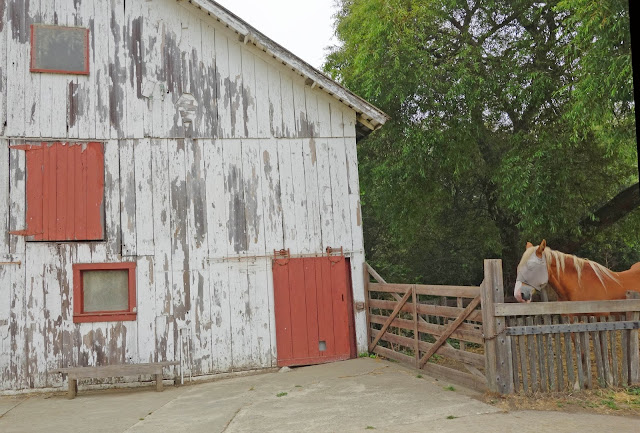Maybe Santa Cruz has crime and homeless problems (click here for the city's Wikipedia page), but I enjoyed my two-day visit to this seaside town (population 63,000) with a wonderful Mediterranean climate. The most impressive amenity is their half-mile long Wharf which is downtown and 100 years old. I visited close to sunset.
This seagull on the wharf's railing has one foot but it seems healthy.
The wharf is lined with dozens of shops and restaurants, parallel to a 2-lane road; there's a $5 vehicle entrance fee, but I parked free far away and walked there. The wharf is a busy place but in a good way.
Under the wharf is a platform where harbor seals hang out.
Here's a video (no sound of seals barking, sorry, operator error). Storyline: a little seal tries to hop on the platform to join his buddies.
From the wharf, I can see the city's Amusement Park and the Boardwalk. That too was a busy place and in a good way. Judging by the many pedestrians I passed, Santa Cruz is more family/resident oriented than touristy.
To the west was a lighthouse, and that too was a busy place! See the people along the fence?
On my walk back to La Lair through neighborhoods, I saw this immense flower which is about 12 inches long (includes stem).
Also passed by this church and huge tree.
It's a great place for people and waterfowl to relax their pace.
Red-winged blackbirds and water plants enjoy this place too.
Just north of Santa Cruz is the Big Basin Redwoods State Park. The 20-mile park road is a wonderfully scenic narrow road (no center line, opposing vehicles take turns where possible).
More huge redwoods!
In 1854 the Meders foreclosed on the Bolcoffs' property, now USA property (following the Mexican-American War), but about 20 years later the Meders sold the property to the Wilders (click here for official webpage). The Wilders expanded a dairy business (producing and delivering milk and butter, their signature milk bottles are antiques), hired many employees, and built this "modern" Victorian Home in 1897 with an electric chandelier and phonograph.
In front of this Victorian home is an unusually large Western Red Cedar.
There's also a pretty row of "Naked Ladies" in front of the house.
When the large dairy business began to falter, they switched to beef cattle.
But in 1969 the Wilders' farm income (expenses included many local employees' wages) couldn't pay the property tax and farm operations ceased. Influential folks convinced the state of California to buy and preserve this ranch which fronts the Pacific Coast.
Outhouse perhaps?
This ranch tells the sad American story of the demise of the family farm; first hard-working immigrants, then expansion and great success, and eventually failure. The park makes no attempt to "update" the buildings.
No attempts to polish the old machinery . . .
For display there is a flock of chickens and this rooster. See his claws?
Those claws (close-up photo below) bring back memories of my family's chicken farm (another story of the demise of the family farm).
When I was about 7 years old I joined my father gathering eggs in a large barn of about 500 chickens and a dozen roosters. Back then, all poultry was "free-range" as they could walk anywhere. The roosters would ruffle their feathers and strut sideways toward me (attack mode) and my father would chase them away. One rooster jumped up, feet forward and up to attack me with his claws! I dropped my basket of eggs, and my father kicked the rooster very hard with his boot (heard a great thud). The rooster died of internal injuries!
The nicest part of the ranch visit however, is the seaside cliff walk along the ocean. Above photo shows how flocks of birds stick together; the terns (left), the pelicans (center), and the seagulls (lower right). The cormorants have a special place too (lower photo).
I visited the seaside "Fern Grotto".
On the beach, a eucalyptus log (distinguishable grain) had washed ashore.
The harbor seals have a special place too; seems they're always sleeping!
The two-mile walk around the cliff is isolated and peaceful; no crowds, no traffic noise, not touristy at all.
It was hard to leave Santa Cruz.



























































